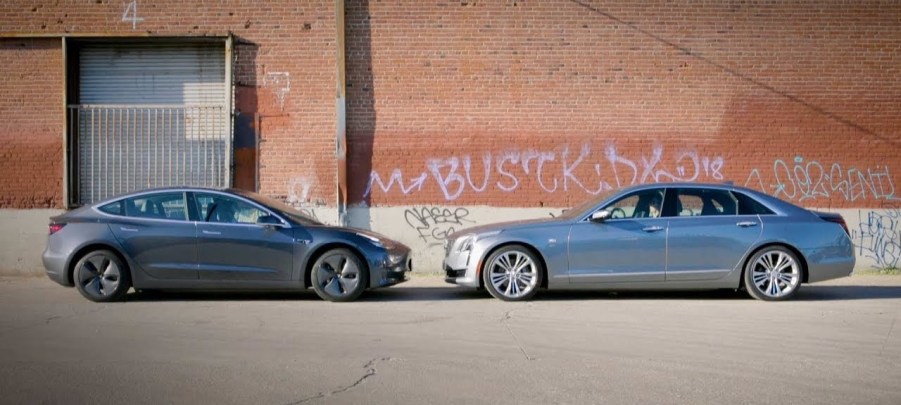
Which Cars Have Self-Driving Features for 2020?
As we’ve seen with Tesla’s buggy Smart Summon feature, autonomous cars aren’t quite ready yet. Although, with the recent rise of features like lane-keeping assist, collision warning, and emergency braking, it may seem like we’re only a short time away from self-driving vehicles. But is that really the case?
Self-driving vs. advanced driver-assistance

It’s vital to understand the difference between ‘self-driving’ features and ‘advanced driver-assistance systems’. As Jalopnik, Consumer Reports, Popular Mechanics, and Wired explain, there is no such thing as a truly self-driving car. No automaker—not Tesla, not Cadillac, not anyone else—makes a vehicle that can drive itself and its occupants without any human interaction. But, as Jalopnik reported, marketing terms can make people think that’s the case.
Nevertheless, what many consider to be ‘self-driving’ features are actually ADAS. While Car and Driver reports that some automakers offer so-called ‘semi-autonomous driving modes’, the Wall Street Journal explains that this is just another part of ADAS. Adaptive cruise control, blind-spot monitoring, even parking assist are all a part of ADAS, explains Motor1.

These systems are there to assist the driver. And, in the case of automatic emergency steering, they can briefly take control of the vehicle. But ADAS is not full automation. At best, it’s what the NHTSA refers to as Level 2 ‘partial automation’: the systems are a support network, but the driver is still responsible for paying attention and maintaining control of the vehicle. They help a driver avoid a crash, but the driver is still the one holding the wheel.
What’s available and what’s best

Each automaker has its own special terminology for its ADAS systems, which Roadshow reports simply adds to the confusion surrounding supposed ‘self-driving.’ These systems do work: an IIHS study of GM cars found automatic emergency braking alone reduced crashes by 17%. But that doesn’t mean you can take a nap in an ADAS-equipped car, as TechCrunch reported roughly 6% of surveyed people thought.
At the moment, only 2 ADAS systems include the ability to, for more than a split-second, take your hands off the wheel. That would be Tesla’s Autopilot—provided Tesla hasn’t disabled it in your secondhand car—and GM’s Super Cruise.
Autopilot is a $7000 option on the Tesla Model S, Model X, and Model 3. Super Cruise is currently available on the Cadillac CT6, although Car and Driver reports it will be available on the upcoming CT4, CT5, and Escalade. GM plans on having 22 vehicles with Super Cruise by the end of 2023.
In contrast, Nissan’s ProPilot Assist will immediately warn you if you take your hands off the wheel; if you don’t, the car will come to a stop. Volvo’s Pilot Assist requires you to have a hand on the wheel at all times, as well.
Neither Toyota’s Safety Sense nor Honda Sensing don’t mention anything about hands-free driving, although both systems can assist the driver with steering in curving lanes. On the other hand, Subaru’s EyeSight will actively alert the driver if it thinks they’re distracted.
But again, if you’re looking for real self-driving features, that doesn’t exist right now.
Is there a timeline for actual self-driving cars?

Despite one robotics expert claiming in a Motor Trend interview that self-driving cars are 10-15 years away, the date for ‘full autonomy’ has been firmly moved to ‘TBD.’ To quote Waymo’s CEO, John Krafcik, self-driving is “really, really hard.”
But it may not even be necessary. The WSJ claims that, if ADAS reaches full ubiquity, the increase in safety will negate the need for a fully-autonomous vehicle. Programmers won’t have to figure out how to code the concept of morality into a car, because there’ll be a human at the wheel anyway.
Follow more updates from MotorBiscuit on our Facebook page.


